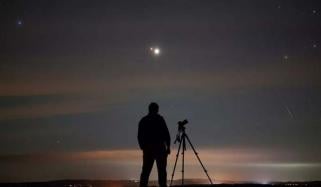
Get ready for exciting and spectacular display of Northern Lights this September!
Skywatchers will have an exciting opportunity to witness vibrant Northern Lights on September 22.
This event is expected to occur around the fall equinox, a time when day and night are nearly equal in length. The equinox usually falls between September 22 and 23 each year.
Why auroras are more frequent around the equinoxes?
Experts anticipate stronger geomagnetic storms during this period, due to the Russell-McPherron Effect.
First described in 1973, this effect occurs when Earth's magnetic field aligns with the solar wind during the equinoxes, allowing more charged particles to enter the atmosphere.
This leads to brighter and more intense auroras, creating a stunning display in the sky.
Moreover, this effect helps explain why auroras are more common around the equinoxes in March and September.
The tilt of Earth's magnetic poles allows more interaction between charged particles and the atmosphere.
When these particles hit oxygen and nitrogen molecules, they emit colorful lights, creating the Northern Lights.
This special alignment during the equinox makes conditions ideal for auroras, particularly in the Northern Hemisphere.
The sun's magnetic activity is nearing its peak in the 11-year solar cycle, increasing the chance of geomagnetic storms.
Earlier in May, a strong storm caused auroras to be seen as far south as Florida and Mexico.
















